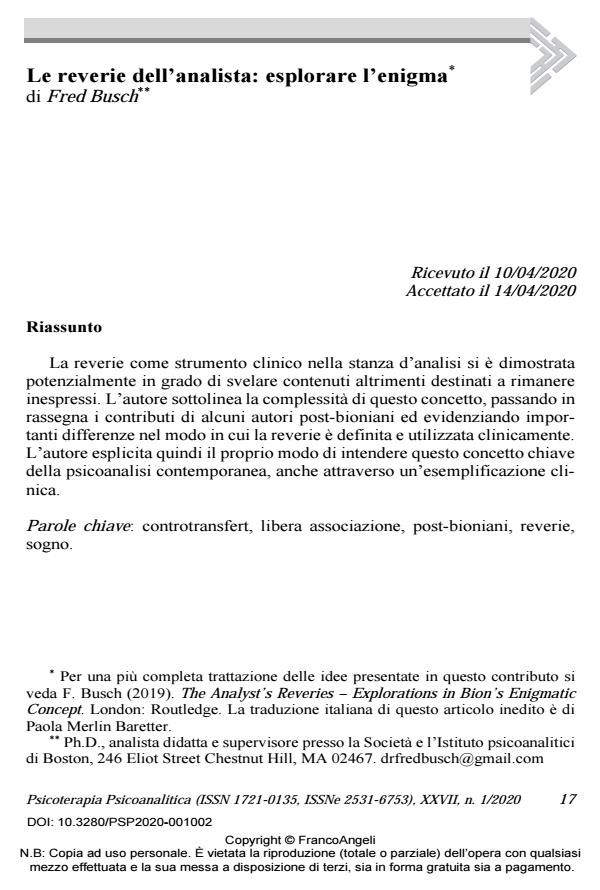Searching for the Enigma of the Analyst’s Reveries
Journal title PSICOTERAPIA PSICOANALITICA
Author/s Fred Busch
Publishing Year 2020 Issue 2020/1
Language Italian Pages 22 P. 17-38 File size 221 KB
DOI 10.3280/PSP2020-001002
DOI is like a bar code for intellectual property: to have more infomation
click here
Below, you can see the article first page
If you want to buy this article in PDF format, you can do it, following the instructions to buy download credits

FrancoAngeli is member of Publishers International Linking Association, Inc (PILA), a not-for-profit association which run the CrossRef service enabling links to and from online scholarly content.
Reverie as a clinical tool in the analytic room has shown the poten-tial to unveil unconscious contents, which would otherwise remain in-effable. The Author highlights the complexity of this concept by exam-ining some post-Bionians’ views on reverie. In so doing, he pinpoints important differences in how reverie is defined and used clinically. The Author then offers his personal viewpoint on this key concept for contemporary psychoanalysis, exemplified in a case report.
Keywords: Countertransference, dream, free association, post-Bionians, reverie.
Fred Busch, Le reverie dell’analista: esplorare l’enigma in "PSICOTERAPIA PSICOANALITICA" 1/2020, pp 17-38, DOI: 10.3280/PSP2020-001002